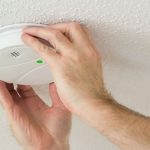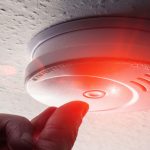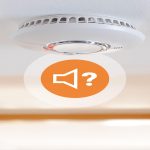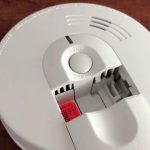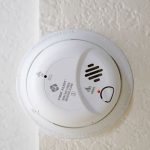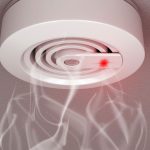If your smoke detector is emitting frequent beeps or chirps, this could indicate low batteries – the most likely source for such noises and which can easily be rectified by purchasing new batteries.
But it could also be the battery or cleaning, as discussed herein, that are to blame. In this article, we’ll cover these potential more serious causes for red flashing smoke detectors.
Battery
Most smoke detectors employ a small battery as their backup power source and will give an early warning signal when its charge starts dwindling down, giving you ample opportunity to change out the batteries before they cause fire damage to your home.
If your smoke detector is still blinking red after adding fresh batteries, there could be another issue with its wiring that needs to be addressed by professional. Get help from someone to ensure it is functioning as intended and make necessary changes if necessary.
To install new batteries in a smoke detector, locate and open its battery compartment on the back. Gently take out and slide out any old batteries before inserting fresh sets ensuring good contact between their contacts and those inside. Close and lock compartment securely once done.
Wiring
If your smoke detector flashes red, this indicates a problem with its wiring. To ensure the safety of your home and family, contact an electrician as soon as possible to have them assess and test your wiring system.
If your smoke detector keeps blinking after installing a new battery, it could be that it wasn’t properly installed – be it upside-down or not fully pushed in.
If the smoke detector is wired into your house’s electrical system, it should be connected to an existing circuit in an outlet box, light fixture box or ceiling fixture box by turning off and opening it before connecting by pigtailing to existing wires. For maximum effectiveness and safety purposes, these wires should be AFCI protected; if they aren’t, consider installing an additional circuit breaker specifically dedicated to feeding this device. Ionized particles emit alpha particles that ionize oxygen and nitrogen atoms between two plates that conduct small current; when smoke enters this chamber it attaches itself to these ions and interferes with current flow triggering alarm circuit.
Dust
As soon as a smoke detector begins flashing red, one of the first thoughts that come
to mind is battery replacement. In fact, this is often one of the primary reasons behind its alarm chirps; therefore, it is vitally important that batteries be installed promptly to reduce fire risks.
However, red lights could also indicate there is too much dust or dirt inside of the unit and needing to be cleared away with either a soft brush or vacuum cleaner. Cleaning out your smoke detector regularly using either method will likely solve this issue.
Notably, if the detector is hardwired into your home, a flashing green light will indicate when it’s on and powering up – this is completely normal and could indicate either a power outage or wiring issues; should this happen it would be wise to contact an electrician so they can assess and repair them as necessary.
Debris
Most smoke detectors use visual indicators to indicate they are functioning correctly, with red blinking lights signalling malfunction and suggesting it cannot detect smoke. But understanding what this signifies will lessen anxiety and allow you to use the device safely.
Ionization smoke detectors use small amounts of radioactive material that pass between two electrically charged plates to form an ionization chamber. The radiation ionizes air molecules, attracting positive ions that create current. If smoke enters, however, alpha particles absorb into it disrupting this current and triggering alarm.
Problems often arise when smoke detectors are too dirty for use. Regularly wiping them with a lint-free cloth or vacuuming can solve this issue; if your smoke detector is over ten years old however, replacing it may be necessary.



